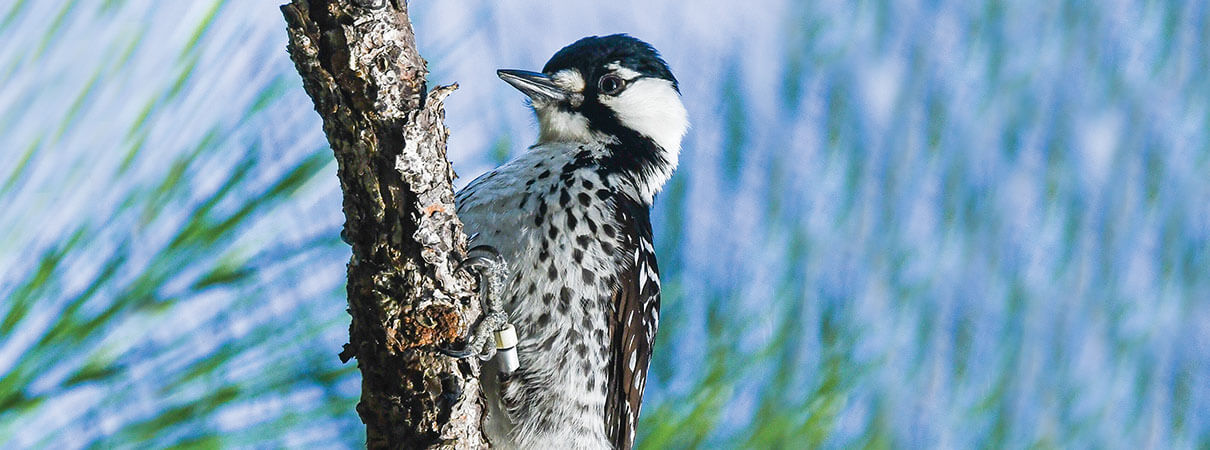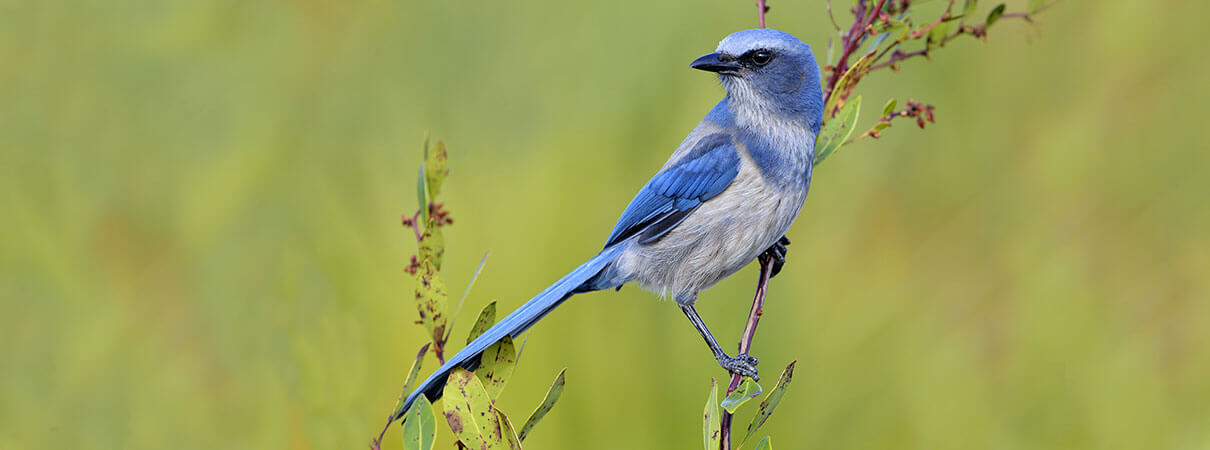What are Florida's Birds Telling Us?
Retired journalists, Anders and Beverly Gyllenhaal are sharing their experiences with birds as they travel across the country.
Florida is a head-spinning place to go birding. One day you're chasing a flock of Roseate Spoonbills across 140,000 acres of pristine wetlands, and the next you're watching Purple Gallinules forage in a ditch a short jaunt from a Starbucks.
A few weeks ago, we tracked Endangered Red-cockaded Woodpeckers through a state park without meeting another soul. On nearby Interstate 95, two Sandhill Cranes grazed on the grassy shoulder as traffic whizzed by a few feet away.
The Florida peninsula has a rich avian landscape, home to more than 500 species, found from the mangroves in the Keys to the Panhandle's oak hammocks. An impressive 10 million acres of parks, refuges, and other protected areas are managed for conservation.
But Florida is on a collision course with its birds. People and birds tend to like to live in the same places here, and with 21 million residents, Florida now ranks as the third-most populated state.

Red-cockaded Woodpecker. Photo by Anders Gyllenhaal
It's fascinating, so Florida became the first stop on our five-month road trip around the country — a birding safari of sorts. In January, we packed up our Airstream trailer, gathered binoculars and cameras, and headed south from our home in North Carolina.
Eight years ago, our love of birding turned into an obsession. Like many birders, the more we learned, the more we realized how much there is to know. With our full-time work as journalists winding down, we started following the birds. Before long we launched a website and began writing articles for newspapers and magazines.
Our concept is simple. Birds have much to teach us, from the impacts of a shifting environment, to how nature is constantly in flux, to how we should stay quiet long enough to truly listen and observe. Hence our website, Flying Lessons: What we're learning from the birds.
In Florida, the lessons are on daily display. Many of the state's signature species are under particular pressure, reaching the limits of their adaptability and in need of aggressive conservation to survive.

Florida Scrub-Jay. Photo by Tim Zurowski/Shutterstock
Our tour started with the Red-cockaded Woodpecker, a species that shows what mandated conservation can accomplish. Once the woodpecker was added to the federal endangered species list in 1973, more land was protected and biologists started installing artificial nest cavities for them. Today, about 15,000 of these birds are found in clusters across the Southeast.
When we caught up with a woodpecker cluster at St. Sebastian River Preserve State Park east of Orlando, three birds were roosting in these custom-made cavities. At dawn, they darted through a stand of 70-year-old Longleaf Pines alongside warblers and nuthatches — just the protective clan they need to survive.
Another of our targets was the Florida Scrub-Jay. It's a keystone bird still in decline, found only in a few counties in Central Florida. The sandy, mostly treeless scrubland it requires has been carved up by development, and pressures are likely to accelerate as sea-level rise pushes people back from the coasts.
We found the jays in a 200-acre preserve near Titusville that illustrates the dilemma. The tract is surrounded on all sides by homes and roads, leaving room for just a half-dozen of these highly territorial birds. The jays followed us along the trail, the two pairs chattering and devouring acorns practically at our feet.

Florida Grasshopper Sparrow. Photo by Anders Gyllenhaal
The Florida Grasshopper Sparrow, an endemic subspecies in serious peril, was also on our list. Just 30 breeding pairs remain on managed public lands. If a last-ditch rescue mission isn't successful, this sparrow will be the next bird to go extinct in the United States, as the Dusky Seaside Sparrow, another Florida-endemic subspecies, did in 1990.
Our time with the Grasshopper Sparrow was the equivalent of an emergency room visit: We joined a crew of wildlife specialists south of Orlando as they released the year's first group of captive-bred sparrows just in time for the breeding season. Yet even the most optimistic researchers on this project concede that the sparrows could be gone in just a few years.
We left Florida in February thinking about what's ahead. On the one hand, many millions of birds fill this state, a glorious abundance of soaring, flapping, squawking, and singing. On the other hand, that cacophony can no longer be taken for granted.
What are the birds telling us?
Their survival is ever more dependent on the very species responsible for their decline. Some of what's needed — the tools, the science, the expertise — is in place. But as a society, we've yet to show the political will and sustained commitment to ensure that all species, including such signature birds as the endemic jays and sparrows, thrive here in Florida.
 | Anders and Beverly Gyllenhaal are veteran journalists who've worked at a string of newspapers from The Miami Herald to the Minneapolis Star Tribune. They spend more than half their time these days traveling the U.S. and writing about birds. |


















































